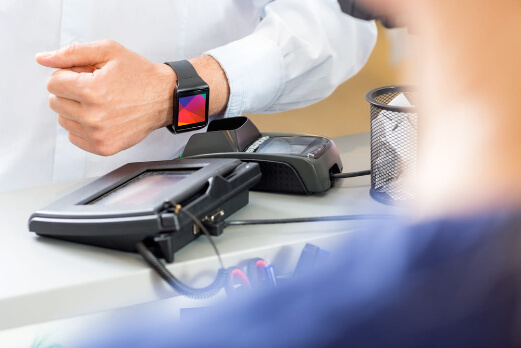
Wearable Technology and Nursing: Improving Patient Outcomes
Wearable Technology and Nursing: Improving Patient Outcomes https://kupplin.com/wp-content/uploads/2023/08/e8497b86-7731-4ee2-68c4-08db4c8ea3ec.jpeg 521 348 kupplinadmin kupplinadmin https://secure.gravatar.com/avatar/6eec4427dd031e16c8da4c63019a7497?s=96&d=mm&r=g- kupplinadmin
- no comments
Wearable technology has become an increasingly popular tool in nursing practice, helping to improve patient outcomes, increase efficiency, and enhance communication. This blog post will explore how wearable technology is used in nursing practice to improve patient outcomes.
What is Wearable Technology?
Wearable technology refers to devices worn on the body, such as smartwatches, fitness trackers, and health monitors. These devices can track various health metrics, such as heart rate, blood pressure, and oxygen levels, and provide real-time data that can be used to inform care decisions.
Improving Patient Outcomes with Wearable Technology
- Early Detection of Health Issues
One of the primary benefits of wearable technology in nursing practice is detecting health issues early. For example, wearable devices can track a patient’s heart rate and alert nurses if it falls outside a normal range, allowing quick intervention and potentially preventing adverse events.
- Enhanced Patient Monitoring
Wearable technology can also improve patient monitoring, particularly for patients at high risk of complications. Nurses can use wearable devices to monitor patients’ vital signs in real time, providing them with valuable data to help inform their care decisions.
- Improved Medication Adherence
Wearable technology can also improve medication adherence, particularly for patients with difficulty remembering to take their medications on time. Intelligent pill dispensers, for example, can remind patients when it’s time to take their medication and provide them with a reminder if they forget.
- Remote Patient Monitoring Wearable technology can also enable remote patient monitoring, allowing nurses to monitor patients at home or in a remote location. This can be particularly valuable for patients recovering from surgery or with chronic conditions requiring ongoing monitoring.
- Increased Patient Engagement
Finally, wearable technology can improve patient engagement by providing patients with valuable data about their health and wellness. Patients can use wearable devices to track their physical activity, monitor their sleep patterns, and even their moods, providing a better understanding of their overall health.
Challenges of Wearable Technology in Nursing Practice
- Data Overload
One of the primary challenges of wearable technology in nursing practice is the potential for data overload. With so much data available, nurses must be able to identify the most critical data points and use them to inform their care decisions.
- Privacy and Security
Wearable technology can also raise concerns about patient privacy and security. Nurses must ensure that patient data is protected and follow appropriate protocols to safeguard patient privacy.
- Technical Issues
Finally, wearable technology can experience technical issues like connectivity problems or software glitches. Nurses need access to adequate support and training to ensure they can use wearable technology effectively.
Conclusion
Wearable technology has become an essential tool in nursing practice, helping to improve patient outcomes, increase efficiency, and enhance communication. Wearable technology is revolutionizing nursing practice, from early detection of health issues to remote patient monitoring to increased patient engagement. However, there are challenges, such as data overload, privacy and security concerns, and technical issues. As technology continues to evolve, nurses must stay up-to-date with the latest developments and take advantage of the many benefits of wearable technology.
- Posted In:
- Uncategorized

Leave a Reply